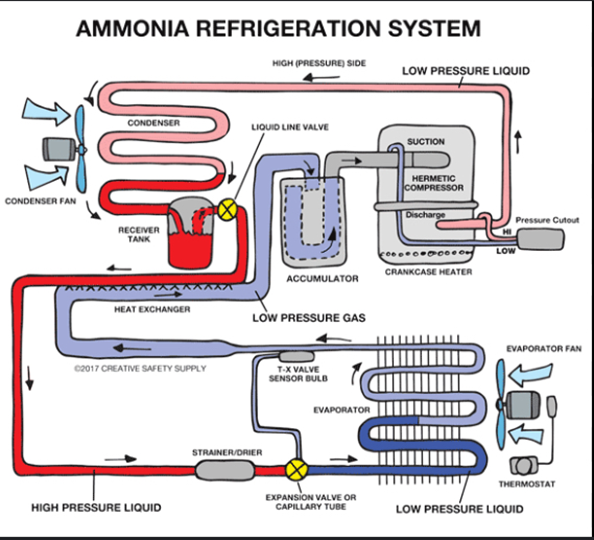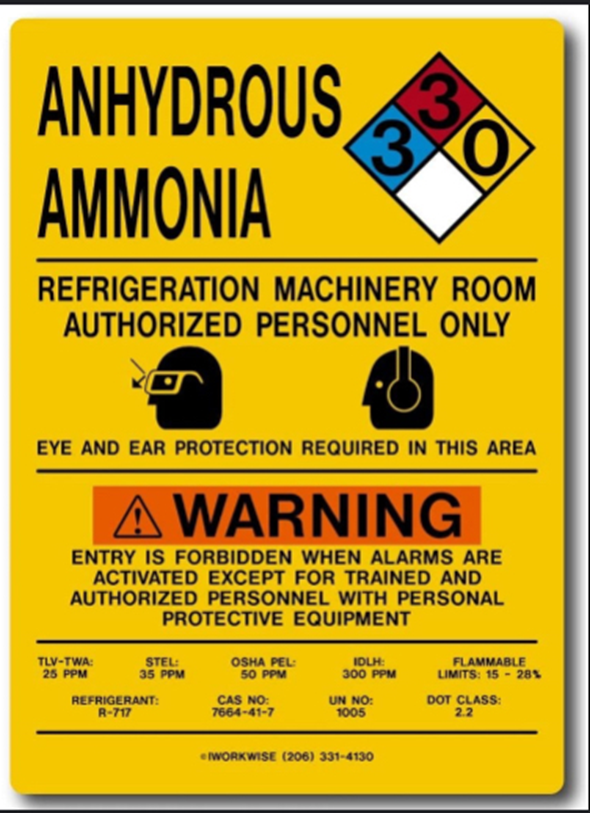
Ammonia is a natural refrigerant and there are key reasons to use it. In addition to that, myths may also be spread as in some cases accidents may occur that will impact perceptions of ammonia refrigerants.
Ammonia is extremely cost effective (Fact), Expensive (Myth)
Ammonia unlike CFCS and HFCS are cheaper to source as for an equivalent tank of CFCS or HFCS there is more value in terms of storage for ammonia as it is less dense in liquid form and as a result less expensive to run. This is also helped with a 15-20 % more efficient rating especially at low temperatures as compared to an equivalent conventional refrigeration machine.
Ammonia is very safe and can give warning signs of danger (Fact), It is a dangerous gas and is completely dangerous to use (Myth)
Let’s get the cat out of the bag. Ammonia IS dangerous, but there are ways and proven methods to mitigate the chances of an accident or outright disaster.

Ammonia systems must be engineered to a certain safety standard and the refrigerant must be carefully handled by trained personnel. In high concentrations although can be deadly, it has a very distinct smell if an ammonia leak is occurring this is far better than some refrigerants as some can be both colourless and doorless.
Better heat transfer (Fact)

Ammonia has better heat transfer properties than most of chemical refrigerants and therefore allow for the use of equipment with a smaller heat transfer area. Thereby plant construction cost will be lower. But as these properties also benefit the thermodynamic efficiency in the system, it also reduces the operating costs of the system.
Energy efficiency for ammonia is high (Fact)
Ammonia is one of the most efficient applications out there, with the application range from high to low temperatures. With the ever-increasing focus on energy consumption, ammonia systems are a safe and sustainable choice for the future. Recent developments of NH3 and CO2 combination contributed to increase the efficiency and NH3/CO2 cascaded is extremely efficient for low and very low temperature applications (below -40’C), while NH3/CO2 brine systems are around 20% more efficient than traditional brines.
Doesn’t deplete the ozone layer (Fact)
Ammonia is one of the many “natural” refrigerants that can be used without depleting the ozone layer. This is a key advantage as it incentivises the use of ammonia more easily when comparing options against CFCs and HFCs.
Conclusion
Overall, we can say that Ammonia refrigerants are a good alternative to a synthetic refrigerant and that many myths about ammonia are either not true or misunderstood.